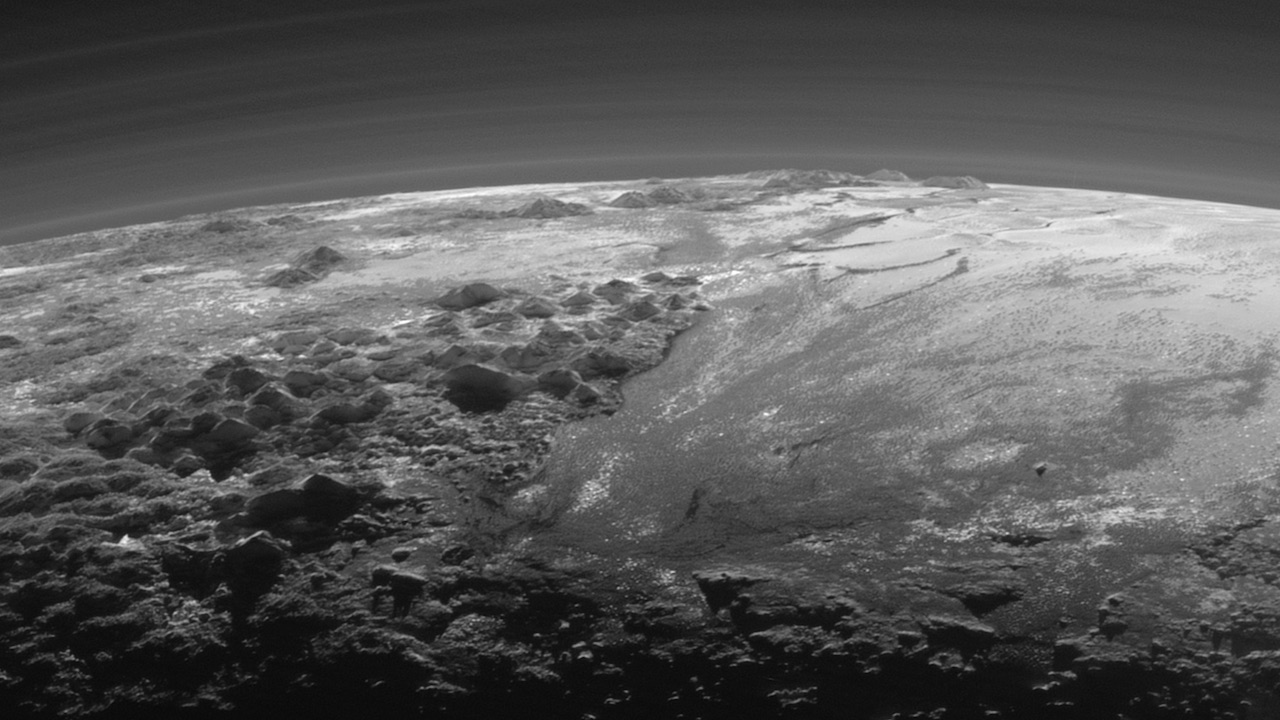Go on an aerial tour of Pluto in new video
Head over Sputnik Planum and Cthulhu Regio

NASA has released a new Pluto flyby video, following the release of yesterdays's image that showed what a sunset on Pluto looks like.
New Horizons has been sending back dozens of images from its flyby of Pluto, and the latest video animation stitches together images that were downloaded from New Horizons from September 11.
"I have used the latest images to produce an animation that shows what it might be like to take an aerial tour through Pluto's thin atmosphere and soar above the surface that New Horizons explored," said NASA's Stuart Robbins, a research scientist at the Southwest Research Institute in Boulder, Colorado in a blog post.
"The mosaic used in this animation was carefully constructed by New Horizons science team members with some of the latest images from the spacecraft to provide an incredibly accurate portrayal of Pluto's surface."
A better look
The images are from near the 'heart' shaped area of Pluto, or Tombaugh Regio, with the images used in the video starting at about 400 meter per pixel, while the rest of the images in the video are about 800 m/px and 2.1 km/px.
The video itself was made with the Long Range Reconnaissance Imager (LORRI), and shows Pluto's hemisphere when New Horizons was closest to it on July 14.
While the video begins at a fairly low altitude at a height of about 120 miles, we end up about 10 times higher at a height of about 1,500 miles, with about an 80% view of the hemisphere.
Get daily insight, inspiration and deals in your inbox
Sign up for breaking news, reviews, opinion, top tech deals, and more.
In his blog post, Robbin's explains that the video begins at the Norgay Montes region, where we can see jagged mountains rise almost 2 miles. The video then flies us north between the Sputnik Planum and Cthulhu Regio areas.
"While Sputnik Planum is smooth at this pixel scale, it's in marked contrast to Cthulhu Regio which has many large impact craters that indicate the Regio is much older," Robbins said.
"The differences in brightness are some of the largest natural brightness variations of any object in the solar system."
The video then shows us Pluto's north pole and the Tombaugh Regio, before we fly further outward to see the dwarf planet's hemisphere.
"The concept of this animation arose from a desire to showcase the most recent imagery received from the spacecraft and the huge variety of terrain types that we see on Pluto," Robbins said.
And this isn't the last we'll be seeing of Pluto, as images of up to seven times better pixel scale are still to come.
Image credit: NASA/JHUAPL/SwRI